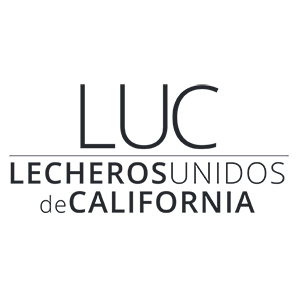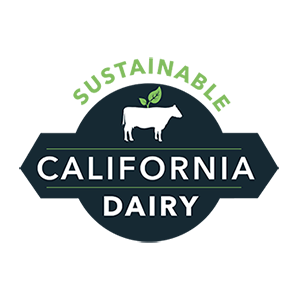California agricultural operations have been significantly impacted by the recent floods throughout the state. The U.S. Department of Agriculture (USDA) has technical and financial assistance available to help farmers and livestock producers recover. Impacted producers should contact their local USDA Service Center to report losses and learn more about program options available to assist in their recovery from crop, land, infrastructure and livestock losses and damages.
“USDA stands ready to assist in the recovery from catastrophic flooding by helping farmers, livestock producers, landowners, and communities clean up and restore farmland, forests and watersheds,” said Robert Bonnie, Under Secretary for Farm Production and Conservation (FPAC). “USDA employees are working diligently to deliver FPAC’s extensive portfolio of disaster assistance programs and services.”
Flood impacts are expected to last for months in some counties as additional precipitation is expected in the upcoming weeks. Producers should keep in contact with their local USDA service center as they assess the impacts to their operations.
USDA Disaster Assistance
Producers who experience livestock deaths may be eligible for the Livestock Indemnity Program (LIP). To participate in LIP, producers must provide verifiable documentation of death losses resulting from an eligible adverse weather event and must submit a notice of loss to their local FSA county office within 30 calendar days of when the loss of livestock is apparent. Payments will be issued once the losses exceed normal mortality.
Meanwhile, the Emergency Assistance for Livestock, Honeybees, and Farm-Raised Fish Program compensates eligible producers for hive loss, stored feed and grazing losses. For ELAP, producers will need to file a notice of loss within 30 days and honeybee losses within 15 days.
Additionally, eligible orchardists and nursery tree growers may be eligible for cost-share assistance through the Tree Assistance Program to replant or rehabilitate eligible trees, bushes or vines lost. This complements Noninsured Crop Disaster Assistance Program (NAP) or crop insurance coverage, which covers the crop but not the plants or trees in all cases. For TAP, a program application must be filed within 90 days.
“It’s important to stay informed about the various programs available to assist in the recovery efforts from these severe weather events and it is equally important that you contact your local FSA office to timely report all crop, livestock, and farm infrastructure damages and losses,” said Blong Xiong, State Executive Director for FSA in California. “Required documentation such as farm records, herd inventory, receipts, and pictures of damage or loss will help expedite FSA disaster assistance.”
FSA also offers a variety of direct and guaranteed farm loans, including operating and emergency farm loans, to producers who cannot secure commercial financing. Producers in counties with a primary or contiguous disaster designation may be eligible for low-interest emergency loans to help them recover from production and physical losses. Loans can help producers replace essential property, purchase inputs like livestock, equipment, feed and seed, cover family living expenses or refinance farm-related debts and other needs. Additionally, FSA has a variety of loan servicing options available for borrowers who are unable to make scheduled payments on their farm loan debt to FSA because of reasons beyond their control.
Risk Management
Producers who have risk protection through Federal Crop Insurance or FSA’s NAP should report crop damage to their crop insurance agent or FSA office. If they have crop insurance, producers should report crop damage to their agent within 72 hours of damage discovery and follow up in writing within 15 days. For NAP covered crops, a Notice of Loss (CCC-576) must be filed within 15 days of the loss becoming apparent, except for hand-harvested crops, which should be reported within 72 hours.
“Crop insurance and other USDA risk management options are offered to help producers manage risk because we never know what nature has in store for the future,” said Jeff Yasui, Director of RMA’s Regional Office that covers California. “The Approved Insurance Providers, loss adjusters, and agents are experienced and well trained in handling these types of events.”
Producers who have not applied for NAP coverage may still be covered. FSA has updated NAP to remove barriers and establish procedures through which an underserved producer with a CCC-860, Socially Disadvantaged, Limited Resource, Beginning and Veteran Farmer or Rancher Certification, on file prior to the applicable NAP application closing date will automatically receive basic coverage for any NAP-eligible crops. Like all NAP-covered producers, underserved producers will still need to file a notice of loss and apply for program benefits.
Conservation
FSA’s Emergency Conservation Program (ECP) and Emergency Forest Restoration Program (EFRP) can assist landowners and forest stewards with financial and technical assistance to restore fencing, remove debris, replace damaged irrigation system, land leveling. FSA has updated ECP policy to permit advance payments, up to 25% of costs, for all ECP practices. FSA is now accepting ECP applications.
USDA’s Natural Resources Conservation Service (NRCS) administers the Emergency Watershed Protection (EWP) program, which assists local government sponsors with the cost of addressing watershed impairments or hazards such as debris removal and streambank stabilization. The EWP Program is a recovery effort aimed at relieving imminent hazards to life and property caused by floods, fires, windstorms and other natural disasters. All projects must have an eligible project sponsor. NRCS may bear up to 75% of the eligible construction cost of emergency measures (90% within county-wide limited-resource areas as identified by the U.S. Census data). The remaining costs must come from local sources and can be in the form of cash or in-kind services.
EWP is designed for installation of recovery measures to safeguard life and property as a result of a natural disaster. Threats that the EWP Program addresses are termed watershed impairments. These include, but are not limited to:
- Debris-clogged waterways.
- Unstable streambanks.
- Severe erosion jeopardizing public infrastructure.
- Wind-borne debris removal.
Eligible sponsors include cities, counties, towns or any federally recognized Native American tribe or tribal organizations. Sponsors must be able to provide the local construction share, obtain permits and site access and agree to perform operations and maintenance of the constructed projects. Willing sponsors must submit a formal assistance request (by mail or email) to the state conservationist within 60 days of the natural disaster occurrence or 60 days from the date when access to the sites become available. For more information, potential sponsors should contact their local NRCS office.
“EWP provides immediate assistance to communities to mitigate potential hazards to life and property resulting from disasters and particularly the severe erosion and flooding that can occur,” said Carlos Suarez, State Conservationist for the NRCS in California. “EWP allows us to work with local sponsors to help damaged watersheds so that lives and property are protected while preventing further devastation in the community.”
Reclamation District 800 in Sacramento has already received $1.5M in EWP funds to assist with levee repairs after weeks of rain caused breaches and breaks.
More Information
On farmers.gov, the Disaster Assistance Discovery Tool, Disaster Assistance-at-a-Glance fact sheet, and Loan Assistance Tool can help producers and landowners determine program or loan options. For assistance with a crop insurance claim, producers and landowners should contact their crop insurance agent. For FSA and NRCS programs, they should contact their local USDA Service Center.
Program Information, Applications & Worksheets
If you’ve suffered excessive livestock death losses and grazing or feed losses due to recent floods, you may be eligible for disaster assistance programs through the USDA Farm Service Agency (FSA).
The Livestock Indemnity Program (LIP) offers payments to you for livestock death losses in excess of normal mortality due to adverse weather and the Emergency Assistance for Livestock, Honeybees, and Farm-Raised Fish Program (ELAP) provides emergency relief for losses due to feed or water shortages, disease, adverse weather, or other conditions, which are not adequately addressed by other disaster programs.
To participate in LIP, you will be required to provide verifiable documentation of death losses resulting from an eligible adverse weather event, and you must submit a notice of loss to your local FSA office within 30 calendar days of when the loss of livestock is apparent. To participate in ELAP, you must submit a notice of loss to your local FSA office within 30 calendar days of when the loss is apparent and should maintain documentation and receipts.
You should record all pertinent information regarding livestock losses due to the eligible adverse weather or loss condition, including:
- Documentation of the number, kind, type, and weight range of livestock that have died, supplemented if possible by photographs or video records of ownership and losses;
- Rendering truck receipts by kind, type and weight – important to document prior to disposal;
- Beginning inventory supported by birth recordings or purchase receipts;
- Documentation from Animal Plant Health Inspection Service, Department of Natural Resources, or other sources to substantiate eligible death losses due to an eligible loss condition;
- Documentation that livestock were removed from grazing pastures due to an eligible adverse weather or loss condition;
- Costs of transporting livestock feed to eligible livestock, such as receipts for equipment rental fees for hay lifts and snow removal;
- Feed purchase receipts if feed supplies or grazing pastures are destroyed;
Producers who experience livestock deaths may be eligible for the Livestock Indemnity Program (LIP). To participate in LIP, producers must provide verifiable documentation of death losses resulting from an eligible adverse weather event and must submit a notice of loss to their local FSA county office within 30 calendar days of when the loss of livestock is apparent. Payments will be issued once the losses exceed normal mortality.
LIP – Livestock Indemnity Program – WORKSHEET | APPLICATION
The Emergency Assistance for Livestock, Honeybees, and Farm-Raised Fish Program compensates eligible producers for hive loss, stored feed and grazing losses. For ELAP, producers will need to file a notice of loss within 30 days and honeybee losses within 15 days.
ELAP – Emergency Assistance for Livestock, Honeybees and Farm-Raised Fish Program – WORKSHEET | APPLICATION
FSA’s Emergency Conservation Program (ECP) and Emergency Forest Restoration Program (EFRP) can assist landowners and forest stewards with financial and technical assistance to restore fencing, remove debris, replace damaged irrigation system, land leveling. FSA has updated ECP policy to permit advance payments, up to 25% of costs, for all ECP practices. FSA is now accepting ECP applications.
Emergency Conservation Program (ECP) – WORKSHEET
Producers who have risk protection through Federal Crop Insurance or FSA’s NAP should report crop damage to their crop insurance agent or FSA office. If they have crop insurance, producers should report crop damage to their agent within 72 hours of damage discovery and follow up in writing within 15 days. For NAP covered crops, a Notice of Loss (CCC-576) must be filed within 15 days of the loss becoming apparent, except for hand-harvested crops, which should be reported within 72 hours.
“Crop insurance and other USDA risk management options are offered to help producers manage risk because we never know what nature has in store for the future,” said Jeff Yasui, Director of RMA’s Regional Office that covers California. “The Approved Insurance Providers, loss adjusters, and agents are experienced and well trained in handling these types of events.”
Producers who have not applied for NAP coverage may still be covered. FSA has updated NAP to remove barriers and establish procedures through which an underserved producer with a CCC-860, Socially Disadvantaged, Limited Resource, Beginning and Veteran Farmer or Rancher Certification, on file prior to the applicable NAP application closing date will automatically receive basic coverage for any NAP-eligible crops. Like all NAP-covered producers, underserved producers will still need to file a notice of loss and apply for program benefits.
The Emergency Watershed Protection (EWP) Program, a federal emergency recovery program, helps local communities recover after a natural disaster strikes.
The EWP Program offers technical and financial assistance to help local communities relieve imminent threats to life and property caused by floods, fires, windstorms and other natural disasters that impair a watershed. EWP does not require a disaster declaration by federal or state government officials for program assistance to begin. The NRCS State Conservationist can declare a local watershed emergency and initiate EWP program assistance in cooperation with an eligible sponsor (see the Eligibility section below). NRCS will not provide funding for activities undertaken by a sponsor prior to the signing of a cooperative agreement between NRCS and the sponsor.
NRCS offers financial and technical assistance for various activities under the EWP Program, including:
- Remove debris from stream channels, road culverts and bridges;
- reshape and protect eroded streambanks;
- correct damaged or destroyed drainage facilities;
- establish vegetative cover on critically eroding lands;
- repair levees and structures;
- repair certain conservation practices, and
- purchase of EWP Buyouts.
EWP Project Criteria
- provide protection from flooding or soil erosion;
- reduce threats to life and property;
- restore the hydraulic capacity to the natural environment;
- economically and environmentally defensible.
Eligibility
Recovery Projects
Recovery projects begin with a local sponsor or legal subdivision of state or tribal government. Eligible sponsors include cities, counties, towns, conservation districts, or any federally-recognized Native American tribe or tribal organization. Interested public and private landowners must work through a sponsor.
EWP BUYOUT Option
In some situations, landowners can directly apply for assistance through a floodplain easement at the local NRCS office when project funding for floodplain easements becomes available. States will hold a signup period for the impacted communities and the local NRCS offices will publicize that information in the affected communities.
The EWP Program cannot be used:
- to address the same structural issue or practice 3 times within 10 years;
- for existing operation and maintenance;
- to repair, rebuild, or maintain any transportation facilities, utilities, or similar facilities;
- to restore projects installed by another federal agency;
- to repair nonstructural management practices;
- to repair coastal erosions to beaches, dunes, and shorelines, including those along the Great Lakes;
- if the recovery measures are eligible for the Emergency Conservation Program offered thru the Farm Service Agency (FSA).



